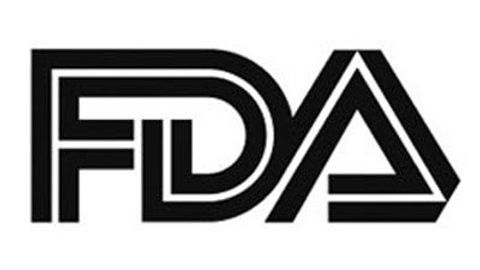FDA Considers BLA for Pertuzumab Biosimilar HLX11 in Breast Cancer
FDA reviews biologics license application for HLX11, a biosimilar to pertuzumab, for HER2-positive breast cancer.

- The FDA accepted for review a biologics license application (BLA) seeking the approval of HLX11 for the treatment of select patients with HER2-positive breast cancer.
- HLX11 is an investigational biosimilar referencing pertuzumab (Perjeta).
- Data from a randomized phase 1 trial (NCT04411550) support this BLA.
The FDA has accepted a BLA for review, seeking approval of HLX11, an investigational biosimilar of pertuzumab, for use in certain patients with HER2-positive breast cancer.1
Pertuzumab is FDA-approved for use in combination with trastuzumab (Herceptin) and docetaxel to treat patients with HER2-positive metastatic breast cancer who have not received prior anti-HER2 therapy or chemotherapy for metastatic disease. The agent is also approved with trastuzumab and chemotherapy as a neoadjuvant treatment for patients with HER2-positive breast cancer that is locally advanced, inflammatory, or early-stage (with tumors >2 cm or node-positive).2
Results from a phase 1 trial comparing HLX11 with pertuzumab sourced from the US, European Union (EU), and China in healthy Chinese male volunteers serve as the supporting evidence for this BLA.1 Additionally, data from a phase 3 trial (NCT05346224) evaluating HLX11 in combination with trastuzumab and docetaxel in patients with HER2-positive, hormone receptor (HR)-negative, early-stage or locally advanced breast cancer further support its use.
Breast cancer, female anatomy: © peterschreiber.media - stock.adobe.com

Data Supporting HLX11
In the phase 1 trial, patients between the years of 18 and 45 were randomized to 1 of 4 groups and treated with either HLX11 or pertuzumab derived from the US, EU, or China.3 The primary end points of the trial were pharmacokinetics and secondary end points were safety and tolerability.
A total of 160 patients were enrolled (n = 40 per group). Findings showed that the 90% confidence intervals (CIs) for the geometric mean ratios of Cmax, AUC0-T, and AUC0-∞ were all within the prespecified equivalence margins. For safety, the incidence of adverse events was generally the same across the 4 groups. Further, neither anti-drug antibodies nor neutralizing antibodies impacted the pharmacokinetics of HLX11.
In the phase 3 study, which was a multicenter, double-blind, randomized, parallel-controlled equivalence trial, patients were randomly assigned in a 1:1 fashion to receive either HLX11 or pertuzumab, both in combination with trastuzumab and docetaxel. In the neoadjuvant setting, both HLX11 and pertuzumab were administered as an initial dose of 840 mg, followed by 420 mg every 3 weeks for up to 4 cycles. In the adjuvant setting, the dosing regimen was the same, with subsequent doses given for up to 13 cycles.4
All patients also received standard neoadjuvant treatment with trastuzumab (loading dose 8 mg/kg, then 6 mg/kg) and docetaxel (75 mg/m2 every 3 weeks), and adjuvant treatment with doxorubicin (60 mg/m2) and cyclophosphamide (600 mg/m2 every 3 weeks for 4 cycles), followed by trastuzumab (8 mg/kg loading dose, then 6 mg/kg every 3 weeks for 13 cycles).
Patients aged 18 or older with histologically confirmed invasive breast carcinoma, and a primary tumor size of more than 2 cm based on local assessment were eligible for enrollment in the study. Patients had to have either early-stage or locally advanced disease, with centrally confirmed HER2-positive and HR-negative status, a baseline left ventricular ejection fraction ≥55%, and adequate major organ function.
The primary end point of pathological complete response (pCR) rate for HLX11 combined with trastuzumab and docetaxel, compared with the combination of pertuzumab, trastuzumab, and docetaxel, was successfully met in the study.4
REFERENCES:
US FDA accepts biologics license application (BLA) for HLX11, biosimilar candidate of Perjeta® (pertuzumab). News release. Shanghai Henlius Biotech. February 2, 2025. Accessed February 4, 2025. https://tinyurl.com/5n6j6be6
Perjeta. Prescribing information. Genentech; 2021. Accessed February 4, 2025. https://www.gene.com/download/pdf/perjeta_prescribing.pdf
Yang J, Lin L, Long Q, et al. HLX11, a proposed pertuzumab biosimilar: pharmacokinetics, immunogenicity, and safety profiles compared to three reference biologic products (US-, EU-, and CN-approved pertuzumab) administered to healthy male subjects. BioDrugs. 2022;36(3):393-409. doi:10.1007/s40259-022-00534-w
Primary endpoint met in phase 3 comparative clinical study of Perjeta® (pertuzumab) biosimilar candidate HLX11. News release. Shanghai Henlius Biotech, Inc. September 30, 2024. Accessed February 4, 2025. https://tinyurl.com/bdfx4fkm







